This amazing bushfire rebuild on the Wye River, Victoria, is a thing of beauty and safety

The two generations of the family hadn’t owned their shared Wye River holiday house long when early on Christmas Day 2015, a bushfire ignited by lightning in the forest behind Victoria’s Great Ocean Road burst from the bush and ripped into the township.
Above the small crescent beach that amplifies the roaring Bass Strait surf, the steep-set hamlet that had always been dominated by lofty eucalypts lost 116 houses, and the canopy that lent it an air of mystery and concealment.
But like many owners, “and because they’re professionals who just get things done”, the family opted to rebuild as quickly as possible on the devastated ridge dividing tiny Separation Creek from the marginally bigger Wye River.
To raise their house again they sought an innovative architecture firm they’d worked with before, and handed Andrew Simpson so many onerous challenges and opportunities that Y House became “the most demanding project I’ve done”.
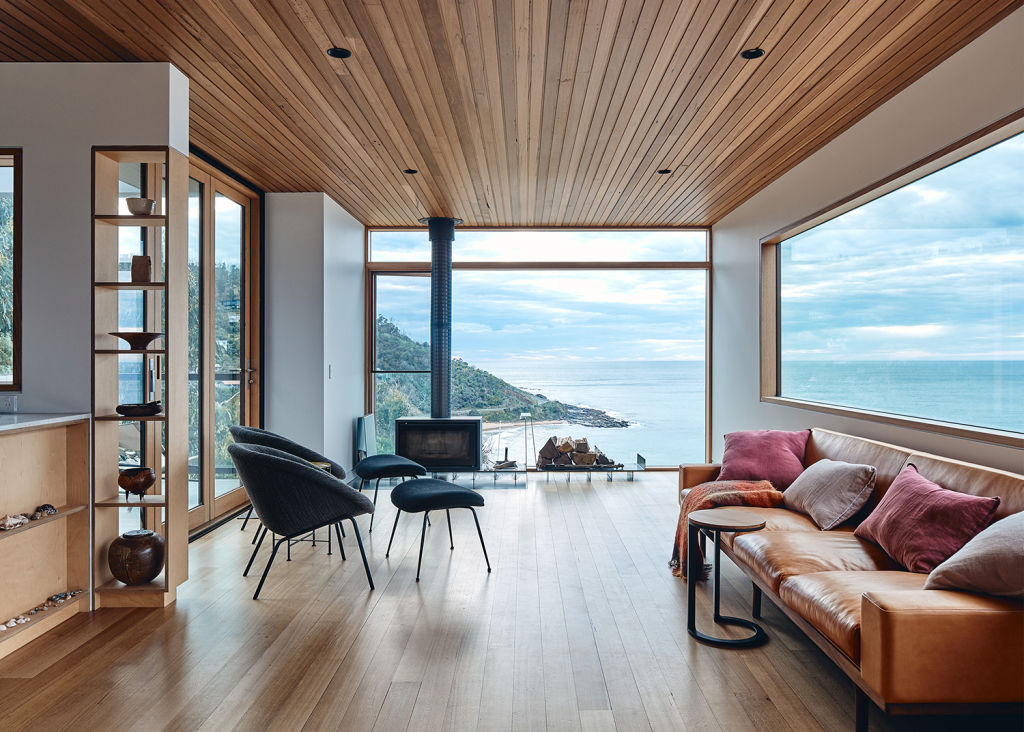
“But I never thought of not doing it,” Simpson says. “It’s an amazing site.”
Tiers of complexity, involving bushfire-safe compliances to the highest possible rating, landslip issues and the need to deal with its own effluent on site, were compounded by no one being sure where the replacement neighbouring houses might be positioned.
“We were pushing to get view lines across to Separation Creek and Wye River but didn’t know exactly where the neighbours would build,” Simpson says.
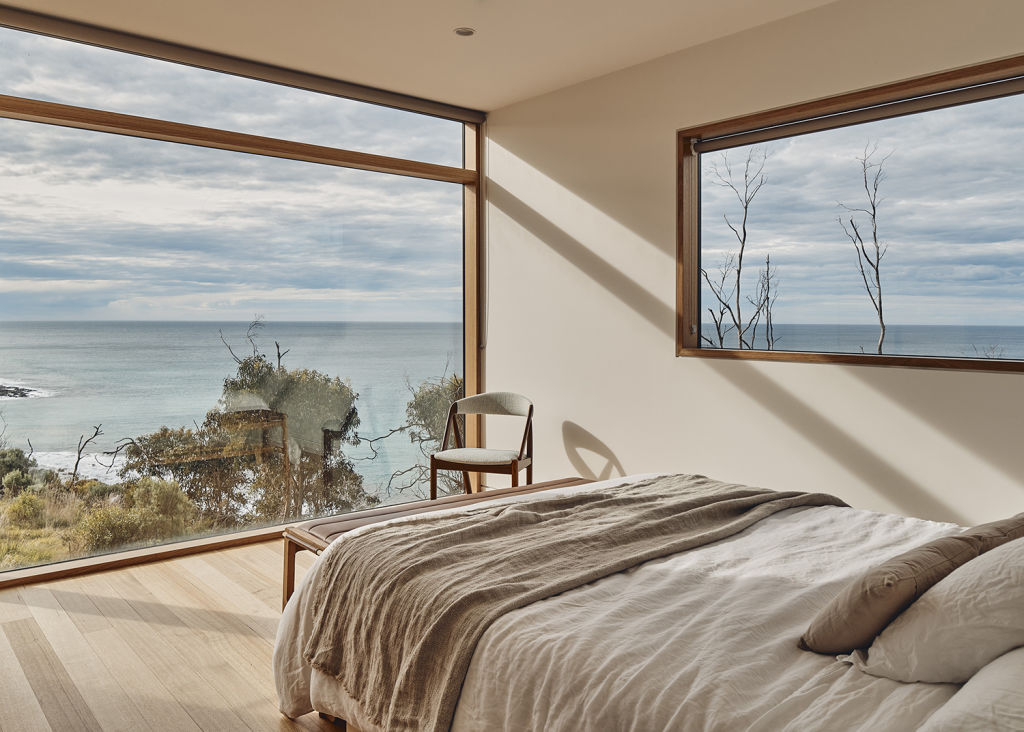
The name of Y House is, Simpson admits, in part a witticism in reference to Wye River, but is also the shape of the two-level dwelling because the three “arms” of the building work to capture the outlooks and to provide internal divisions so three generations can chill out in different parts of the building.
Three bedrooms and two bathrooms are on the lower level. And, with fancy fold-down beds and bunks, a couple of rooms are mightily flexible. But there’s another possible fourth sleeping space upstairs in the shared living zone that is more usually designated a TV room.
In almost all directions, the view lines are “spectacular”, says the architect. Yet in such a high-rated bushfire zone, planning meant the “super expensive” composite windows that provide fire protection and thermal performance, had to be limited.
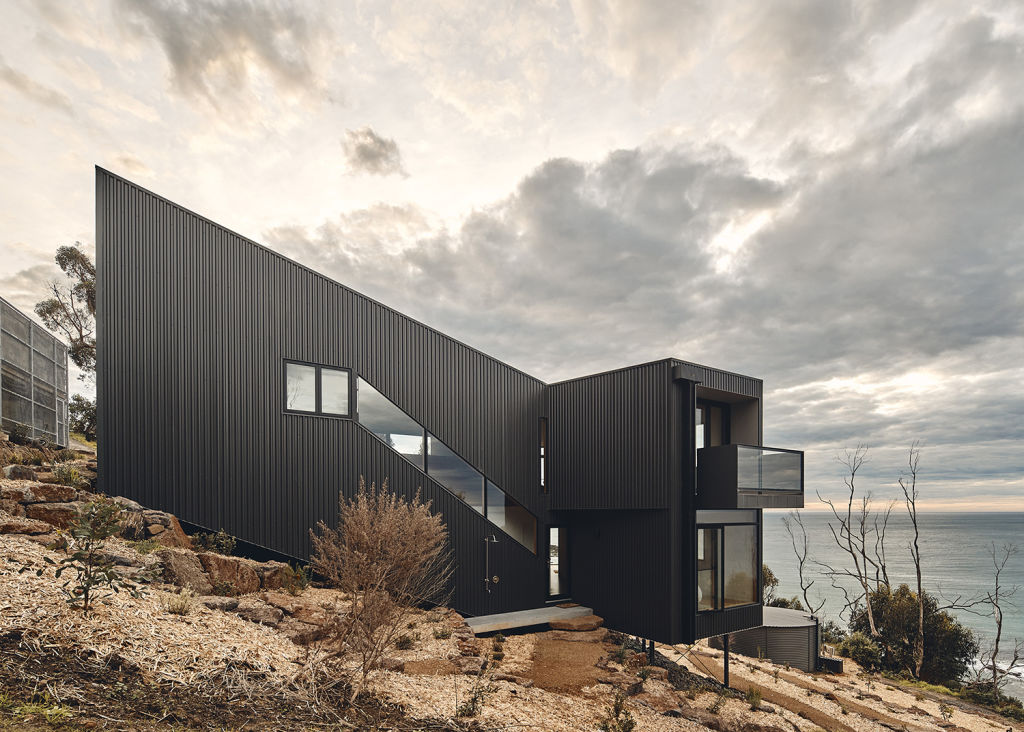
Characteristically, Simpson used these restrictions masterfully to curate views so they become experiences.
“We were interested in varying the experiences of what is around you by the way we configured the windows,” he says.
The long strip of glazing that traces the staircase decent from front door to lower level “was a means of emphasising the seascape”, he says. “The foreground is cropped out so that all you see is the horizon line and it becomes quite a visceral experience of sea and sky as you come down the hill.”
As if waking in a bedroom apparently suspended above the shore break isn’t enough, “different experiences of site and aspect” happen all through the house.
To secure the building to land that following the fire was slippage prone, three-metre piles were bored down to rock.
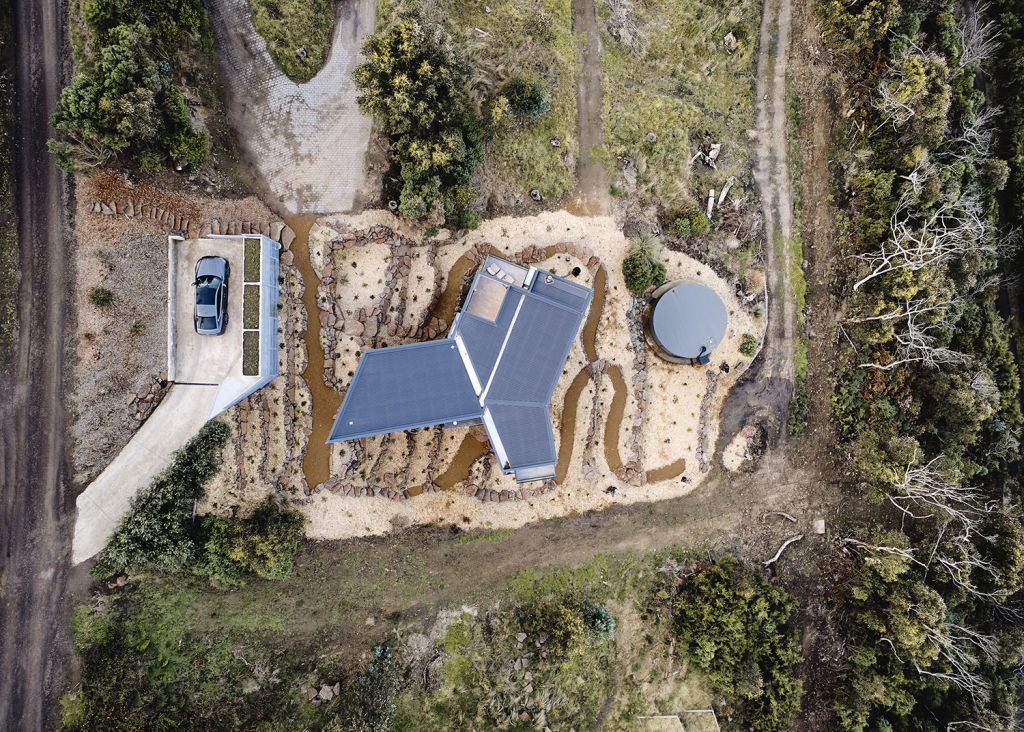
To deal with its own effluent, “a dispersal field” was made across terraces that appear as the squiggly lines in the aerial photographs. “The sewerage is treated and dispersed as clear water.”
As Wye River’s new housing slowly reappears from the regenerating forest, many of the homes look bulky and bunker-like, an effect exacerbated by the obviously regulation-designated uniform of charcoal-dark corrugated cladding.
Y House is another built to be defendable. Yet its form and ever-changing window placements makes it a more nuanced dark object in such a special setting. “We wanted to make a defendable building that was attractive.”
The requisite steel on all sides has been sourced from New Zealand where it is used in volcanic areas and is a product that will stand up to flame and the corrosive nature of salt-spray.
Within the house, the senses are indulged in interiors abundant in timbers; silvertop ash ceilings, Tasmanian oak floors and plywood birch cabinetry. “Fantastic timber. We’ve always loved timber which is so wonderful to touch and is so warm, and particularly here as a counterpoint to the building.”
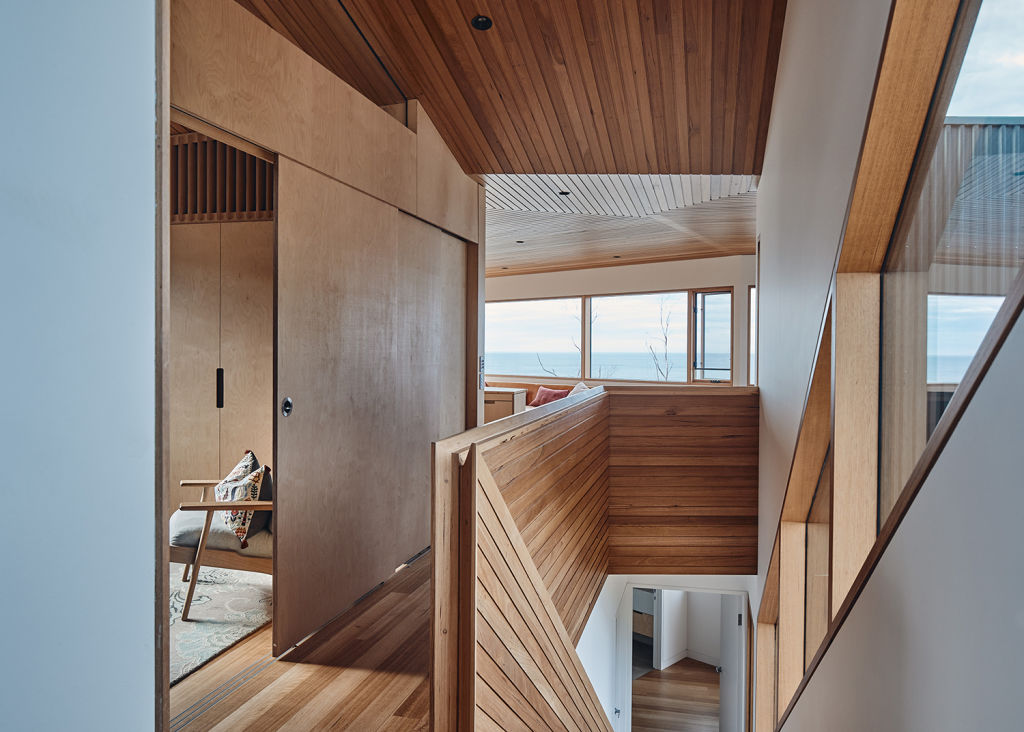
Andrew Simpson duly pays the compliment to his long-time builder Camson Homes for the “wonderful craftsmanship” displayed in the woodwork, drawing special attention to “the herringbone timberwork on the ceiling and floor” near the staircase in the living area.
“Intricate timber work that makes a warm soft interior within a steel box.”
We recommend
We thought you might like
States
Capital Cities
Capital Cities - Rentals
Popular Areas
Allhomes
More







